Brand Awareness Campaigns in the Age of AI: Staying Visible Without the Clicks
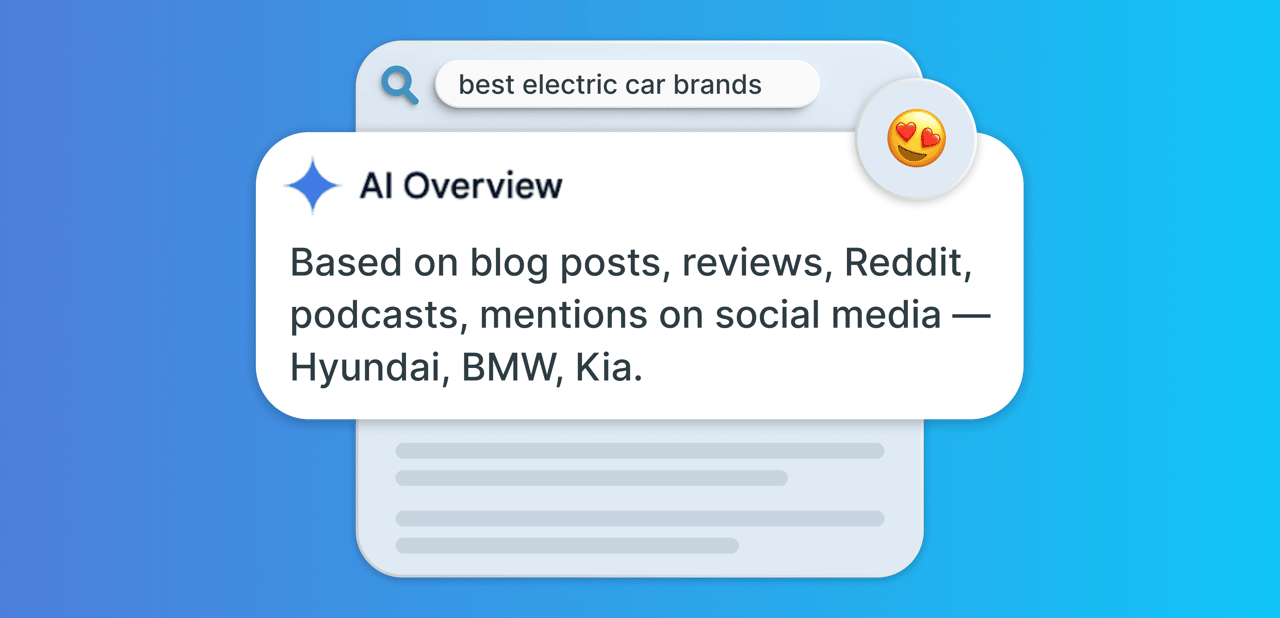
The rules of visibility have changed.
Today, your brand might get noticed without ever getting clicked. People scroll past your post, see your logo in a meme, hear your name in a podcast, or read about you in an AI-generated summary—all without visiting your website. And yet, those moments matter. They shape perception, spark curiosity, and plant the seed for future trust that results in a strong brand reputation online.
That’s the magic (and challenge) of brand awareness campaigns in 2025.
What is a brand awareness campaign?
A brand awareness campaign is all about making sure your brand gets noticed—and remembered.
Unlike traditional content marketing performance campaigns that focus on clicks or conversions, these campaigns aim to increase brand awareness and build brand recognition, emotional connection, and trust. Instead of asking someone to buy a car today, you’re making sure they think of your brand when they’re finally ready to ride.
Common tactics include:
Social media storytelling
Collaborations with influencers or creators
PR stunts and media placements
Visually striking content (video, billboards, packaging)
Event activations or experience-based marketing campaigns
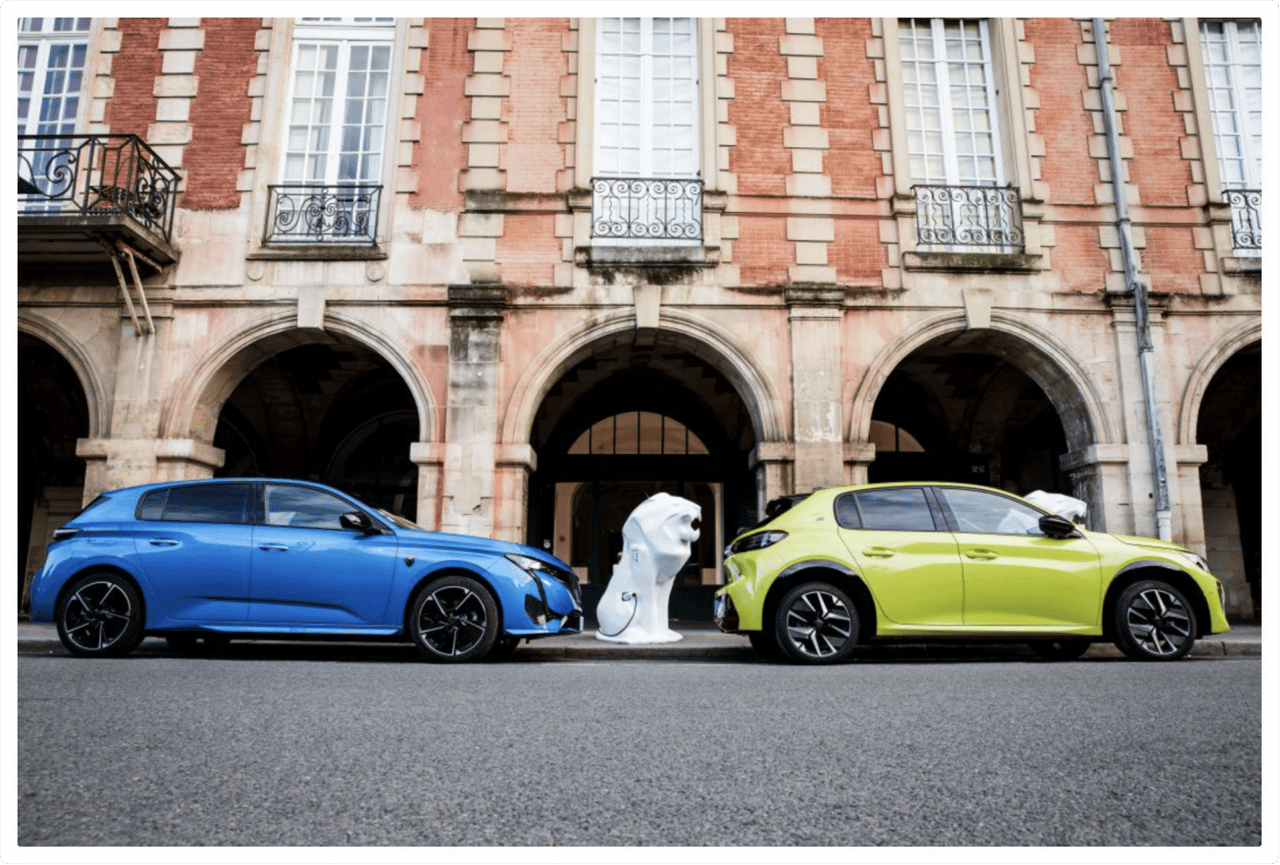

Source: Stellantis
In the car industry, brand awareness campaigns often go beyond promoting horsepower or pricing. Let's look at Powered by Lions, a recent campaign by Peugeot, and the Born Free Foundation. Instead of spotlighting a specific model, they tapped into the emotional power of their iconic lion logo to support real-world lion conservation efforts. The digital campaign raised awareness for endangered species while reinforcing Peugeot’s identity as a responsible, purpose-driven brand. The outcome? They hit the sweet spot of the eco-aware target audience who will remember Peugeot when they decide to buy an electric car.
However, these campaigns can be hard to track through traditional analytics. That’s where social listening tools come in—helping you monitor mentions, spot viral moments, and measure real visibility across the internet.


Why brand awareness strategy matters more than ever in the Zero-Click era
Spiders of the search engines are done waiting for your website.
With AI Overviews, featured snippets, and language models answering questions directly on the results page, users often get what they need without clicking through. Your blog post might never load. Your pricing page might never get opened. But your brand name? That can still show up—if it’s already in the conversation.
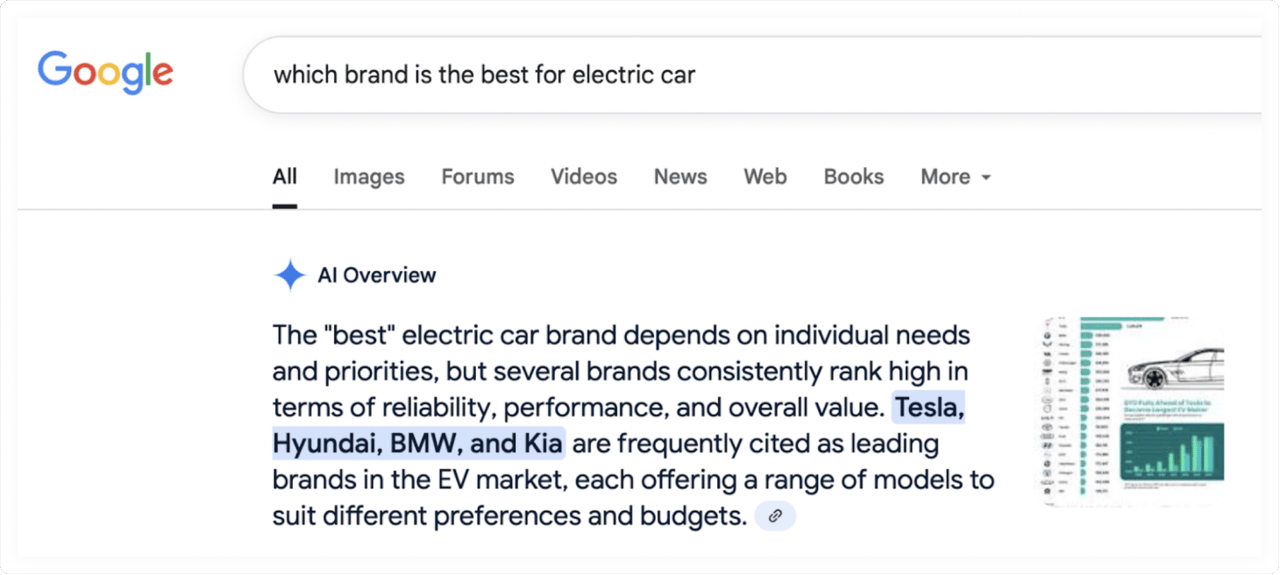

Source: Google
This is why brand awareness matters more than ever. To show up in AI-generated answers, your brand needs to be part of the data on which those answers are built. That includes blog posts, reviews, Reddit threads, podcasts, TikToks—any mention that signals familiarity or relevance.
The brands people recall are the ones they’ve already seen, heard, or talked about. What do you think when you see the famous tick below? Is it "Nike"? Paired with "Just do it"?
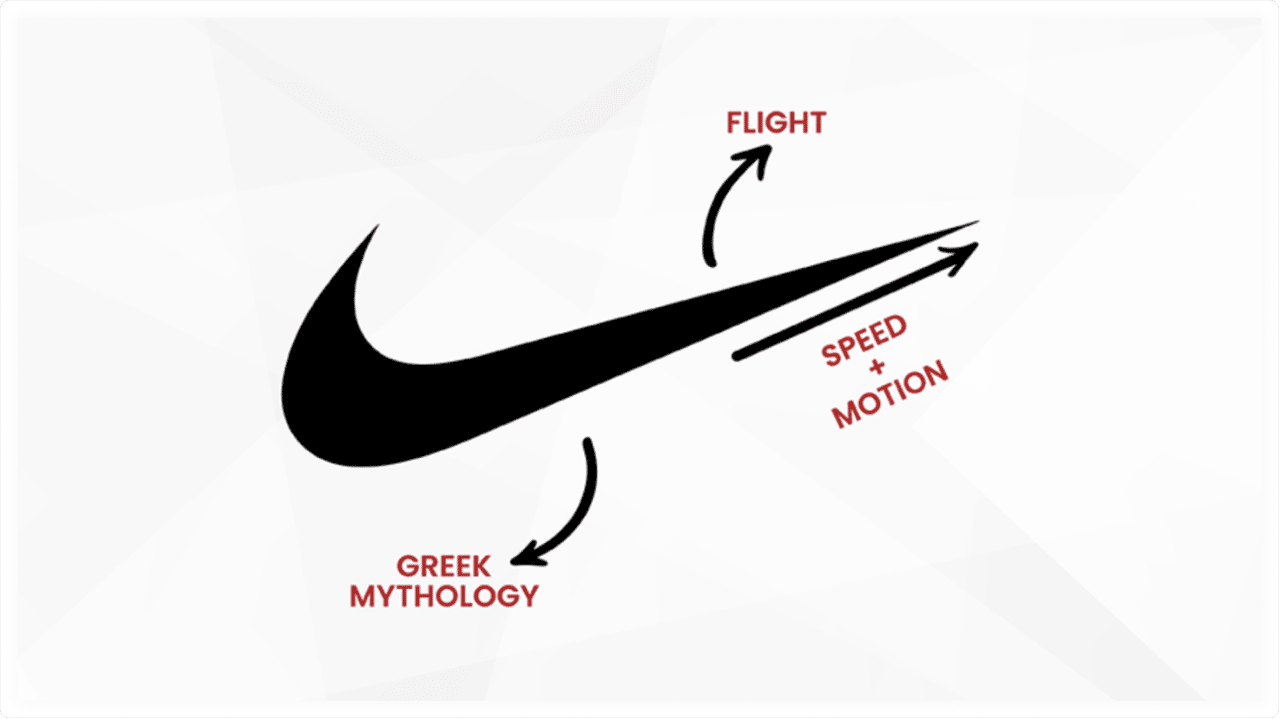

Source: Logo Design Valley
In 2025, strong brand awareness increases your chances of being suggested and not just found. A car brand that’s consistently mentioned in EV comparison threads or featured in viral TikToks is more likely to be surfaced in a “best electric SUV” AI summary, even if no one clicks your actual site.
Being top-of-mind now means being top-of-prompt later. In the long run, it means increased sales for your business.
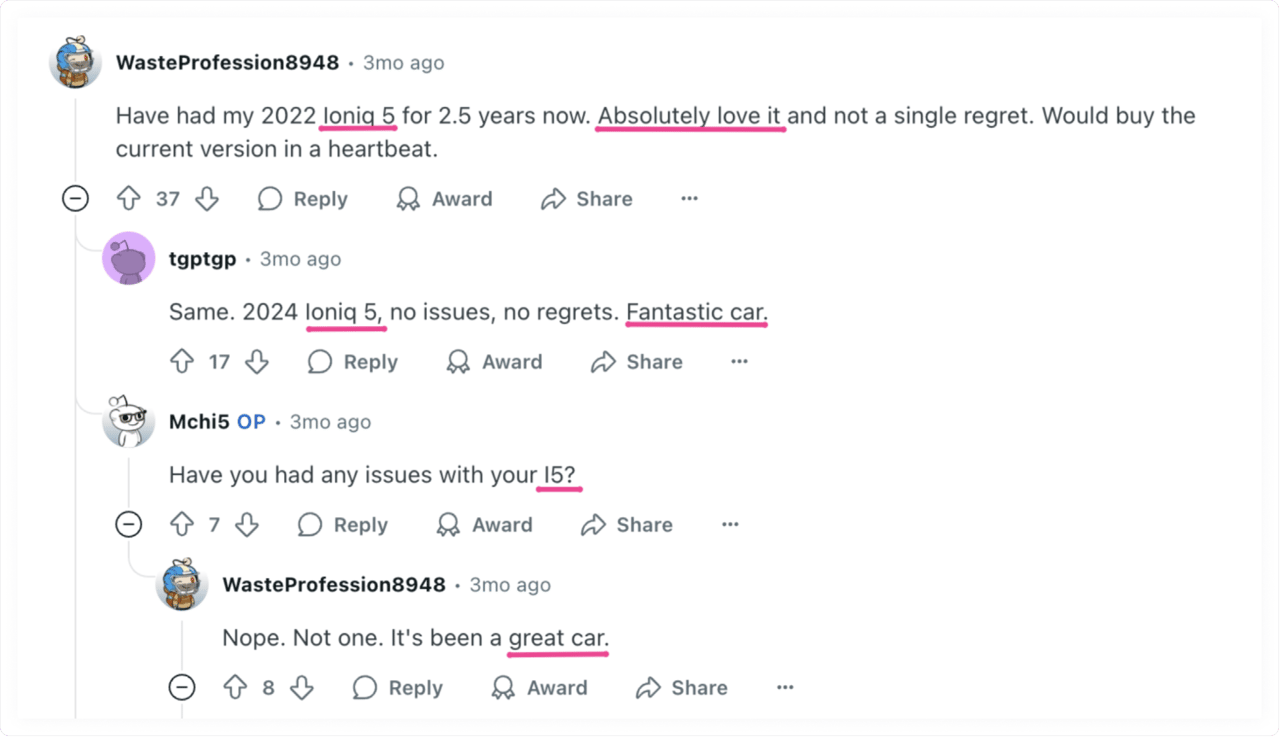

Source: Reddit
How brand awareness campaigns help you stand out in AI-driven search
AI doesn’t just scan your website. It pulls from everywhere—articles, social posts, video captions, product reviews, podcast transcripts, and more. If your brand shows up often enough across those touchpoints, it becomes part of the broader narrative. That’s what gives you visibility in zero-click search spaces.
Brand presence feeds AI training data
Large language models and AI-powered search tools are trained on massive amounts of public data. If your brand is being mentioned in blog posts, quoted in news articles, tagged in videos, and discussed in communities like Reddit or Quora, it increases the odds that you'll be referenced when someone asks a related question.
If you're not showing up in the content AI reads, you're invisible when it answers.
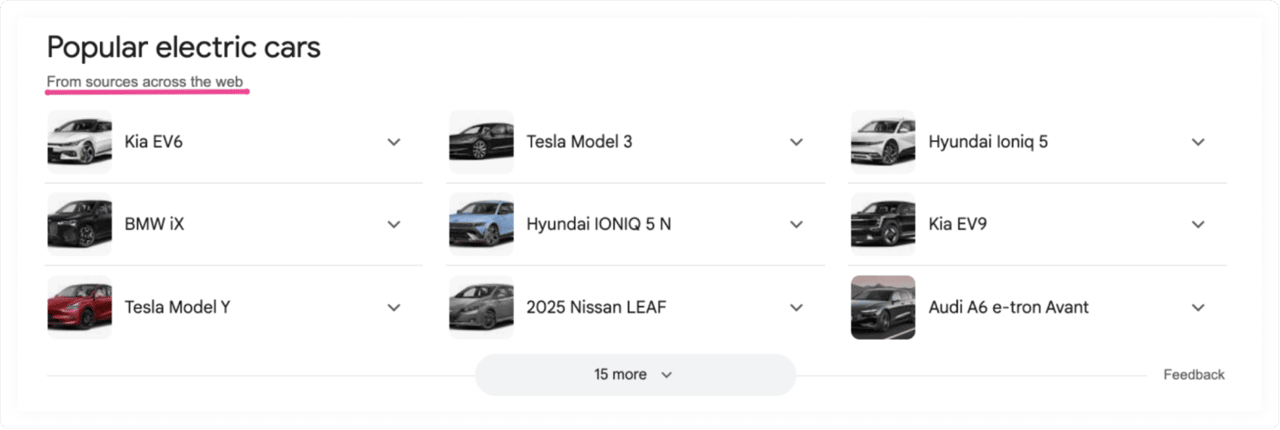

Source: Google
Share of voice leads to share of suggestion
The more people mention your brand (organically or through campaigns), the more it gets associated with authority in that space. Let’s say your EV model keeps popping up in TikTok reviews and Reddit threads about range performance—search AI may begin suggesting it in queries like “most efficient electric cars” even if your domain isn’t visited.
Visibility turns into implied credibility, which is why being present with intent is the pillar of a healthy brand awareness strategy.
Build brand awareness and familiarity—even without clicks
Awareness doesn’t always come from direct engagement. Being mentioned in a newsletter, tagged in a tweet, or shown in a YouTube thumbnail creates touchpoints that stick. When AI connects the dots later: “trusted EV brands,” “off-road SUVs,” “cars with best safety ratings”, that earlier visibility makes a difference.
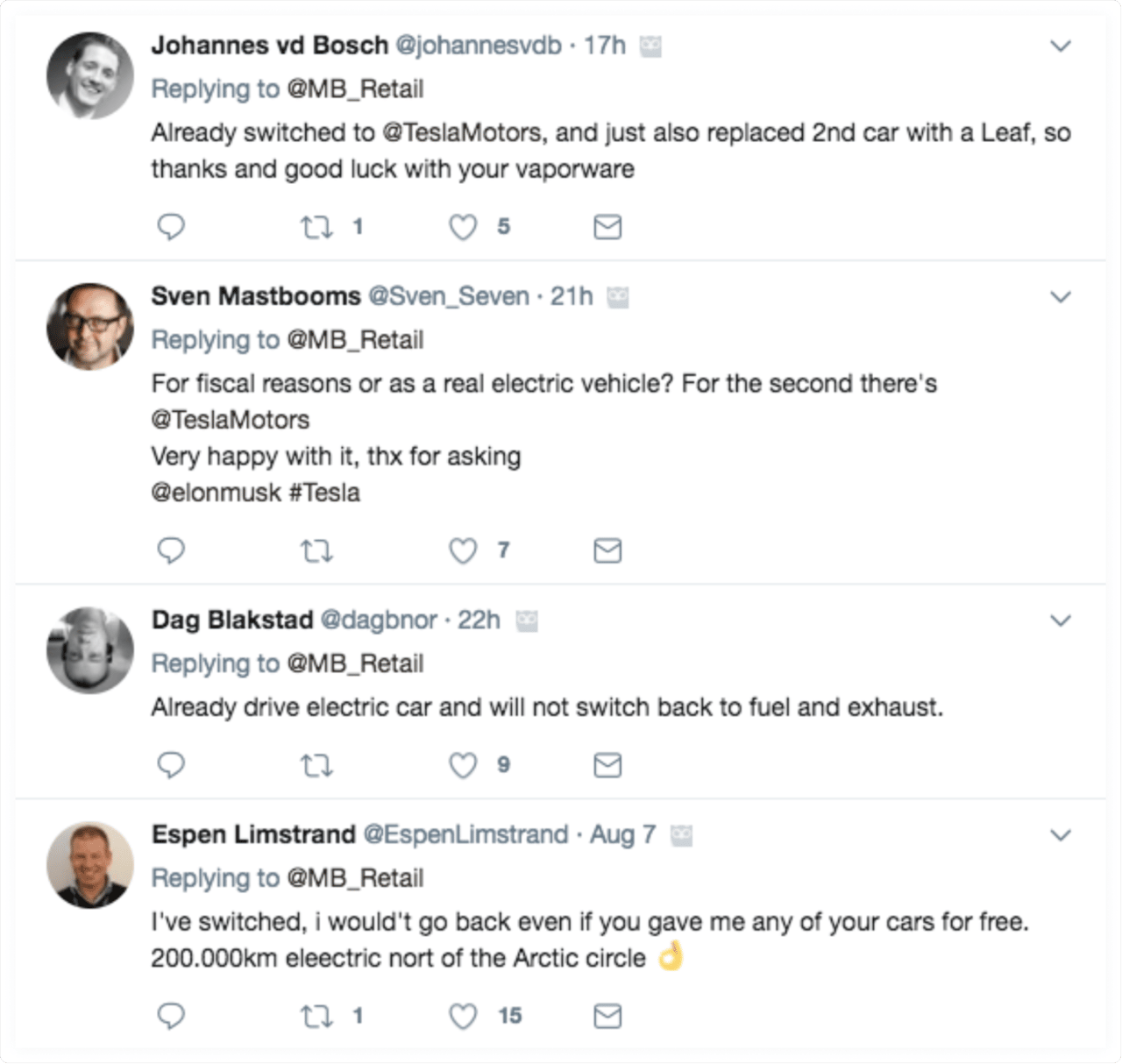

Source: X
Examples of high-impact brand awareness campaigns
Unlike typical ads designed to drive clicks, the campaigns we are talking about here are made to spark conversations, stir emotions, and leave a lasting impression—to increase brand awareness.
Let's review some brand awareness examples that will inspire your next rodeo and startle your target audience. Here’s how four car brands made themselves unforgettable without asking for a single conversion.
A TikTok AR experience beats ad campaigns
When Ford introduced the Maverick pickup, they stepped into unexpected territory—TikTok. Instead of a typical ad, Ford launched an AR-driven #FordMaverick effect, allowing users to shrink or enlarge a 3D Maverick within their own videos. Some placed it on a dining table, others next to their Yorkie, and one creator even inside a laundry room.
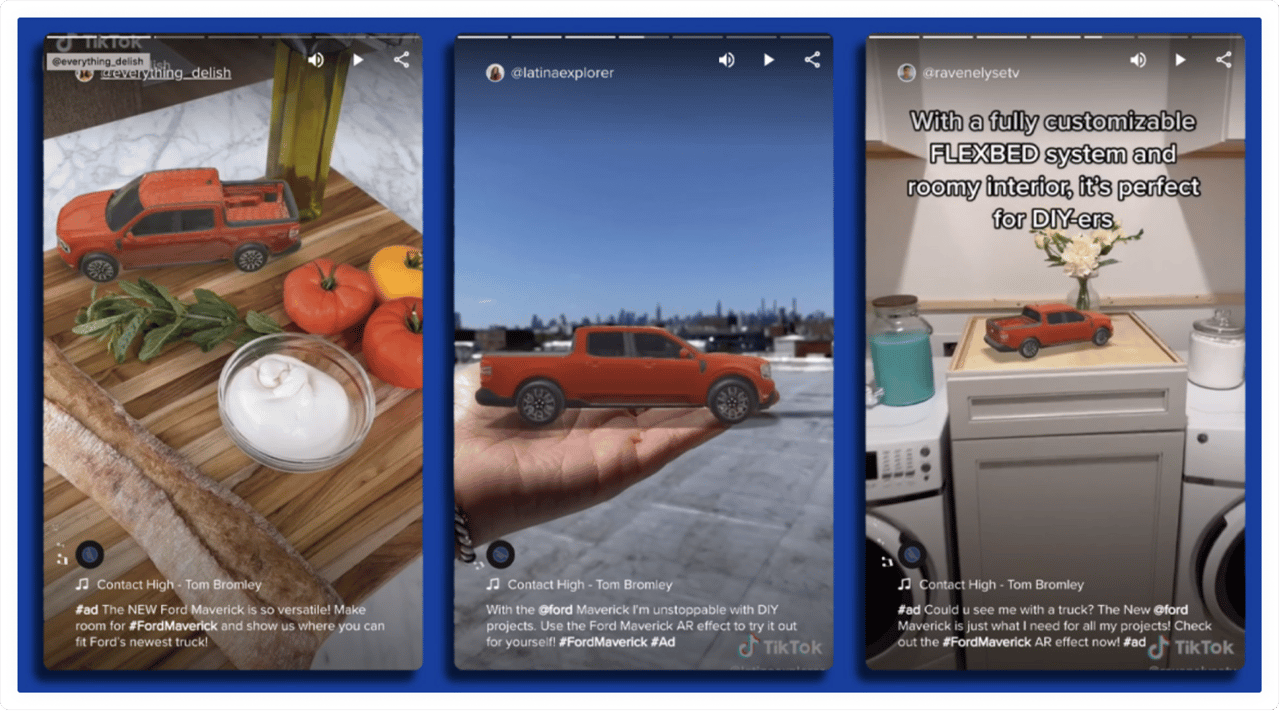

Source: Gary Crossley Ford
With over 10.6 billion views and more than 17,000 creator videos in just the first month, Ford's team proved that they are the masters of social media marketing. They delivered an interactive moment that people shared purely because it was fun and creative, growing brand awareness and tapping into new audiences with ease.
A strong brand recognition strategy
Polestar knew its audience wasn’t just buying a car—they were buying into a future. So instead of blasting ads across channels, the brand quietly invested in thought leadership. Polestar co-published research with clean energy outlets and mobility think tanks, diving into topics like battery ethics and EV lifecycle emissions. These reports weren’t flashy. But they were credible—and soon, they started popping up everywhere: in LinkedIn roundups, EV investment blogs, and even government task force discussions.
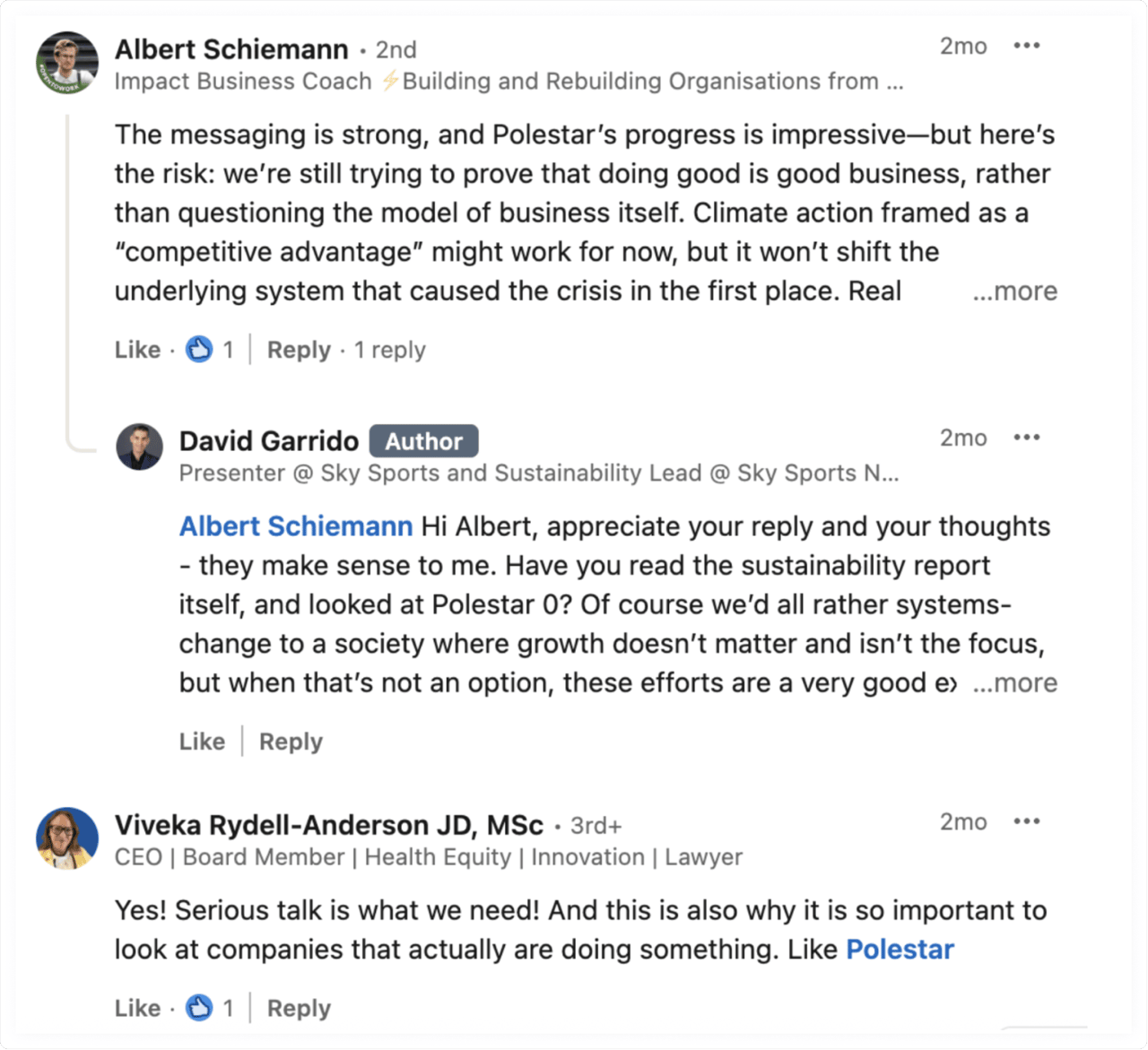

Source: LinkedIn
By the time someone searched “sustainable electric vehicles,” Polestar was already part of the answer, in this case not because of high social media engagement, but because they were referenced, quoted, and trusted.
A Reddit fanbase that did the content marketing itself
Rivian never asked its drivers to start a movement. But they did. On Reddit, proud owners began sharing camping trips, off-road experiments, and detailed gear setups, turning their trucks into storybooks. One user posted a time-lapse of charging a Rivian from a solar panel setup in the Utah desert. Another wrote a 2,000-word guide comparing Rivian’s storage to the Ford Lightning’s, complete with photos and spreadsheets.
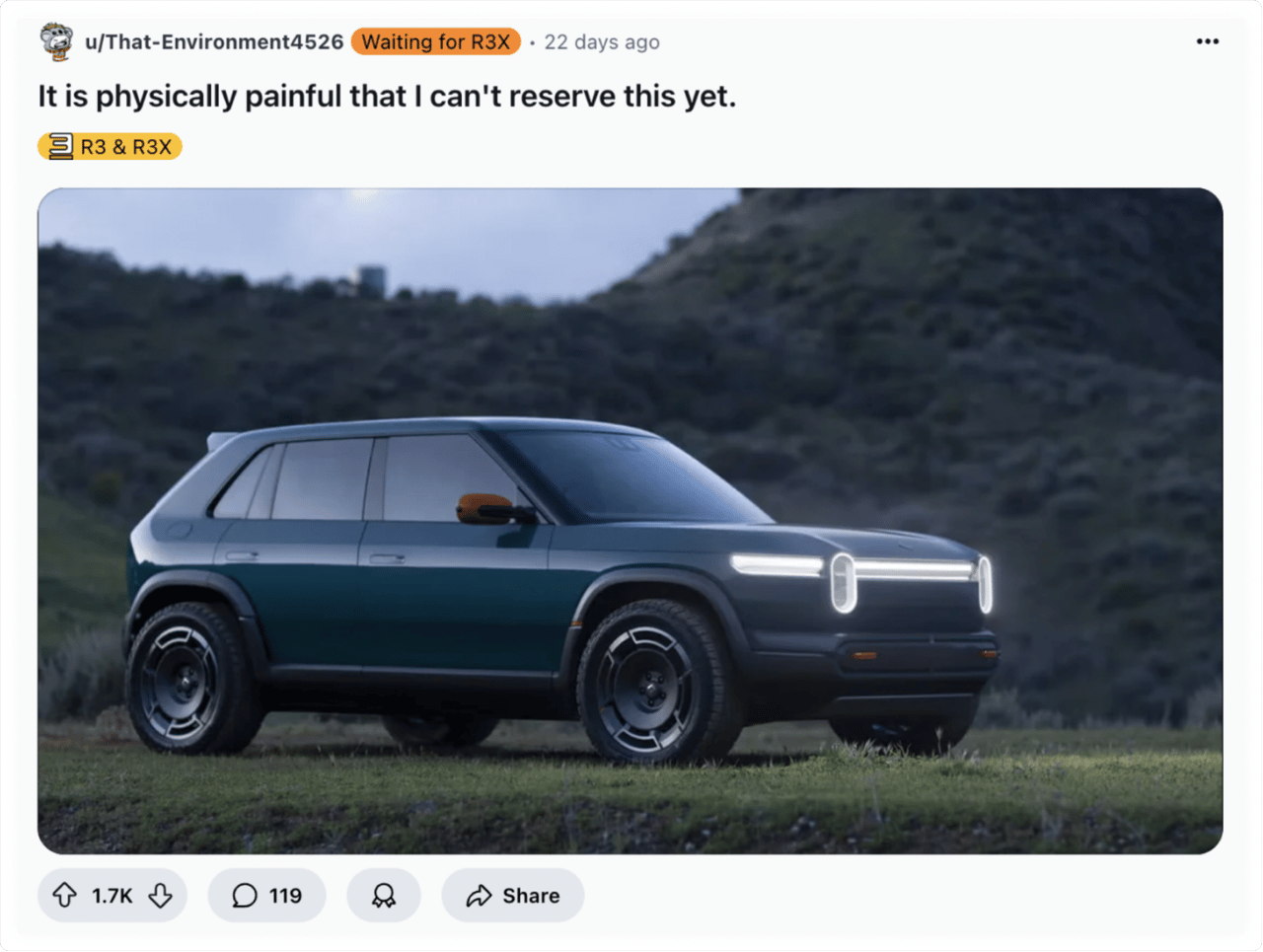

Source: Reddit
These posts were not sponsored, but organic. They came from the community, as a casual word-of-mouth marketing. But they helped Rivian become the go-to name in conversations about adventure-ready EVs. Today, when someone asks ChatGPT or Google’s SGE, “What’s the best electric truck for camping?”, that collective Reddit buzz speaks louder than any ad ever could.
A visual brand that made people stop scrolling
When Cupra introduced the Tavascan, it didn’t rely on specs to make an impression. Instead, the brand treated the campaign like an art installation on wheels. Cupra and creative agency Grand Visual placed the Tavascan five meters in the air inside the iconic London landmark, transforming it into a striking spectacle that grabbed media attention even before any test-drive content went live.
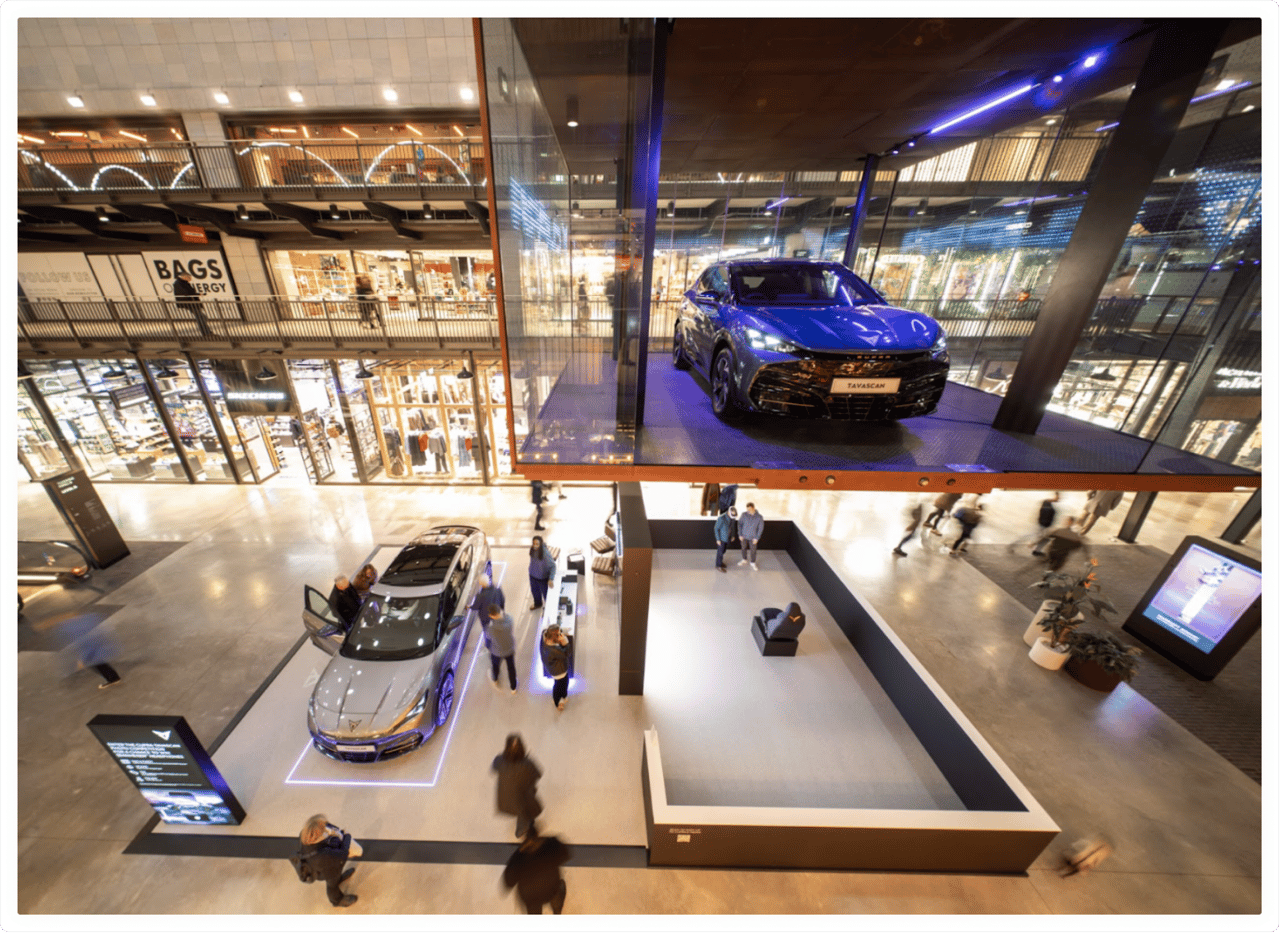

Source: Grand Visual
Then, they filled Instagram feeds with surreal close-ups: metallic textures, angular silhouettes, and warm interior lighting. No slogans, no calls to action—just a feeling. People reshared the images like design inspo. And suddenly, Cupra wasn’t just a car brand, it was a visual language. Even if someone never visited the website, they remembered the shape, the color palette, and the vibe. And good vibe equals good brand awareness.
How to measure the success of brand awareness campaigns
Measuring brand awareness is not as simple as looking at the click-through rate.
The best brand awareness campaigns often don’t ask people to take action, at least not right away. Instead, they make the brand memorable, incorporating the brand message into conversations and culture. To know whether they worked, you need to look in different places.
Brand mentions (text and visual)
Mentions aren’t limited to hashtags. They can be embedded in tweets, tucked into YouTube comments, or hidden in the background of an Instagram story. And with visual content exploding, your logo might show up on a hoodie, billboard, or car wrap—all of which count as brand exposure. Tools like YouScan help detect both text and visual mentions, so nothing gets missed.
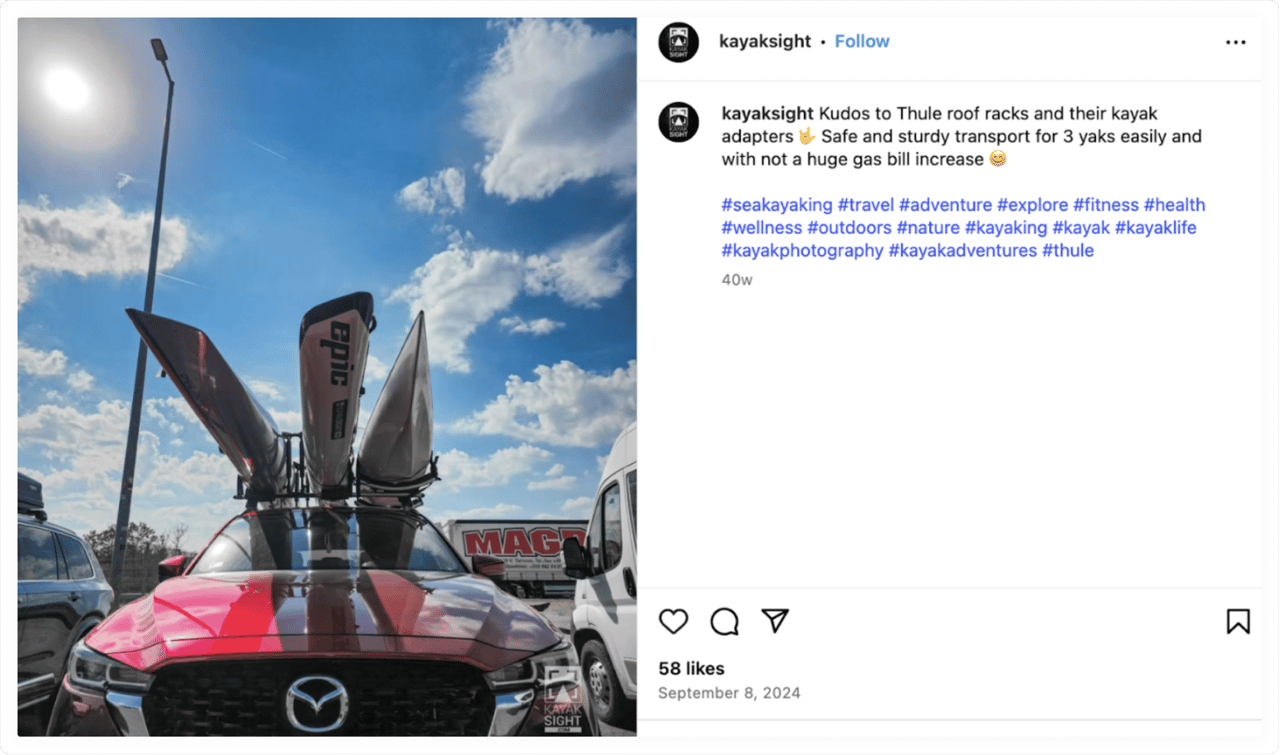

Source: Instagram


Sentiment trends in brand awareness marketing
It’s not just how much people are talking about you—it’s how they talk about you. Are conversations filled with excitement, trust, sarcasm, or skepticism? AI-powered sentiment analysis can reveal emotional patterns that help you understand whether your brand awareness is building a strong brand reputation or confusion.
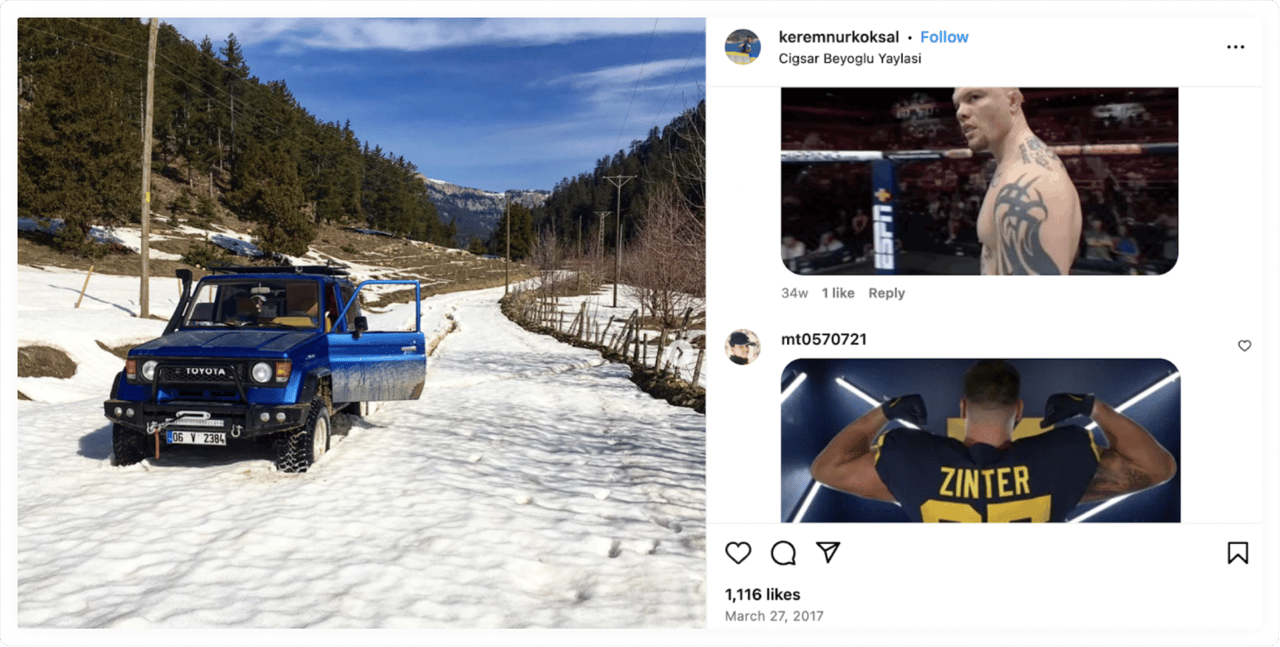

Source: Instagram
For example, Toyota's existing customers perceive it as a power car for impossible terrains. While increasing awareness and reaching new customers, Toyota remains one of the industry giants known for its key benefits for off-road journeys. The sentiment that goes with the brand is "tough".
Share of voice vs. competitors
When users turn to AI or search tools and ask for the best EV for city driving or the safest SUV for families, whose name comes up first? Monitoring your share of voice helps you benchmark where your brand stands in the broader conversation compared to your competitors.
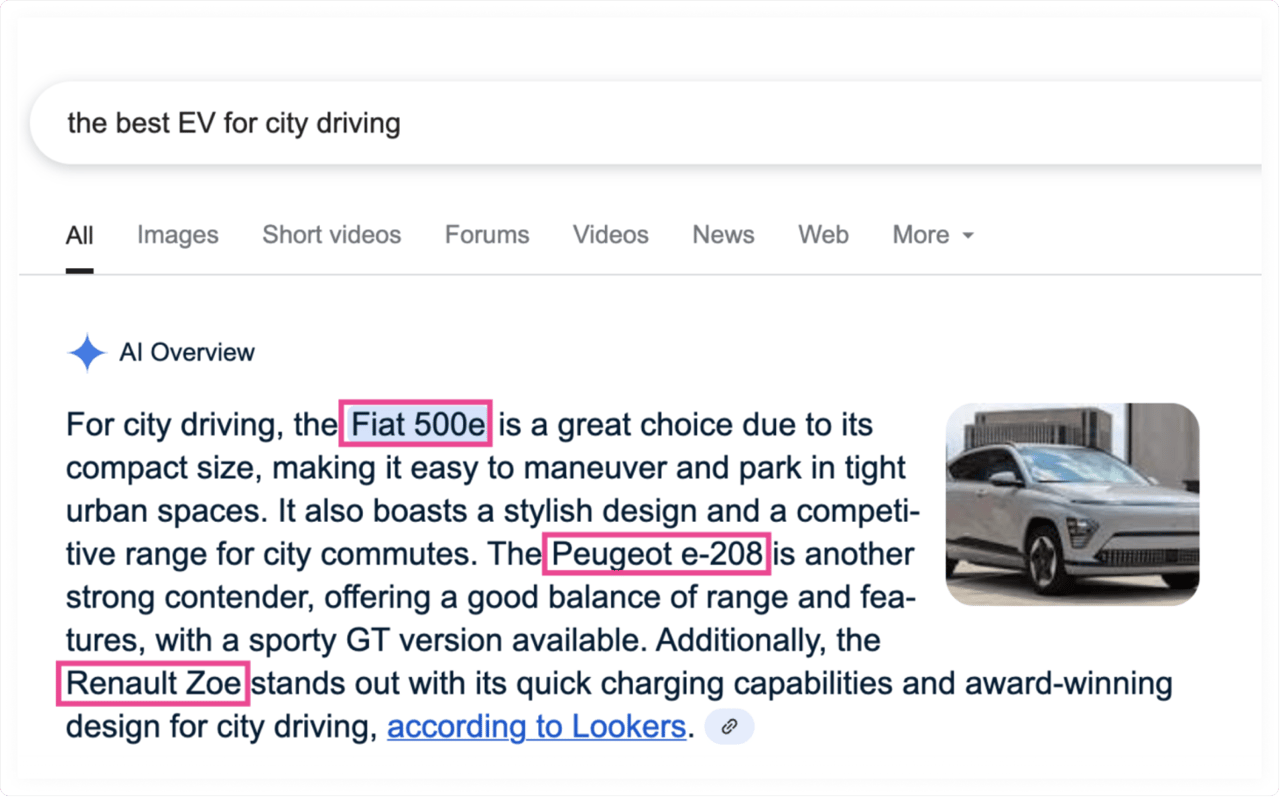

Source: Google
Virality signals
Look out for sudden spikes in attention. Did an influencer unexpectedly tag you in a story? Did a fan-made video go viral on TikTok? This valuable content can’t be predicted, but it can be measured, especially when your monitoring tool captures real-time engagement shifts across multiple channels.
A particular product, if it's good, can be promoted by the users organically. Even though we are used to influencer marketing, spontaneous tags that reach larger audiences still happen in social media posts. Moreover, these accidents might help you discover your brand ambassadors.
UGC and organic tag volume
User-generated content is one of the strongest indicators of customer loyalty and brand love. When people start using your branded hashtag, posting about your product, or tagging you unprompted, you’ve moved from brand awareness to affinity. That kind of customer interaction often flies under the radar unless you're investing marketing efforts into actively tracking it.
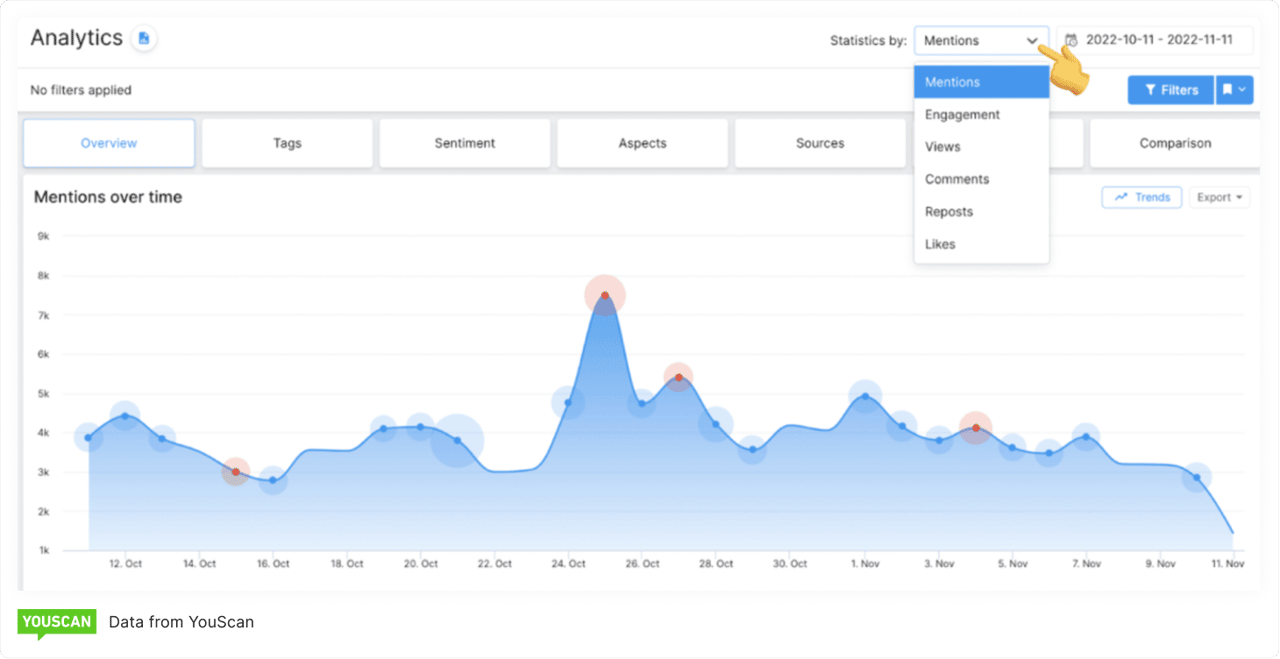

Source: YouScan
Top channels and regions
Your campaign might not trend globally, and that’s okay. What matters is understanding where it resonated. Maybe your campaign hit hard in Spanish-language automotive forums. Maybe it spiked in Southeast Asia thanks to a local TikToker. YouScan helps map not just the volume of mentions, but where and how they’re happening.
This enables you to stop wasting resources and focus your strategy where it matters—on a referral program in Australia and New Zealand, for instance.
Pre/post-campaign brand perception
Before you launched that visual-heavy campaign, were people calling your brand “affordable” or “luxurious”? Afterward, did that shift? Tracking the change in language, tone, and associations around your brand can reveal whether your message is landing the way you intended.
With a platform like YouScan, your marketers can finally measure what traditional analytic tools like Google Analytics or Meta Insights can’t: how it felt, where it spread, and what stuck.
What makes a brand awareness campaign effective in 2025
You don’t need the biggest budget to make an impact and spark brand recall among your relevant audience. In 2025, what sets a brand awareness campaign apart is how precisely it lands and attracts future customers. The most effective campaigns are built on clarity, emotion, and data. They show up in the right places, in the right formats, with the right energy—and they evolve as the conversation does.
Here’s what that looks like in practice:
Deep audience insight
You can’t build awareness if you don’t know who you’re trying to reach. The best campaigns are rooted in real, behavioral insights—what your potential customers care about, what they ignore, what language they use, and where they spend their attention. It’s a disposition on top of simple demographics.
The right platform and format
A good idea in the wrong format attracts no one. Brands that win brand awareness understand platform-native content. They design Reels for video marketing instead of repurposing TV spots, use carousels on LinkedIn to tell stories and experiment with Shorts or Threads depending on audience habits. Coca-Cola, for example, pays great attention to how and where it says what matters.
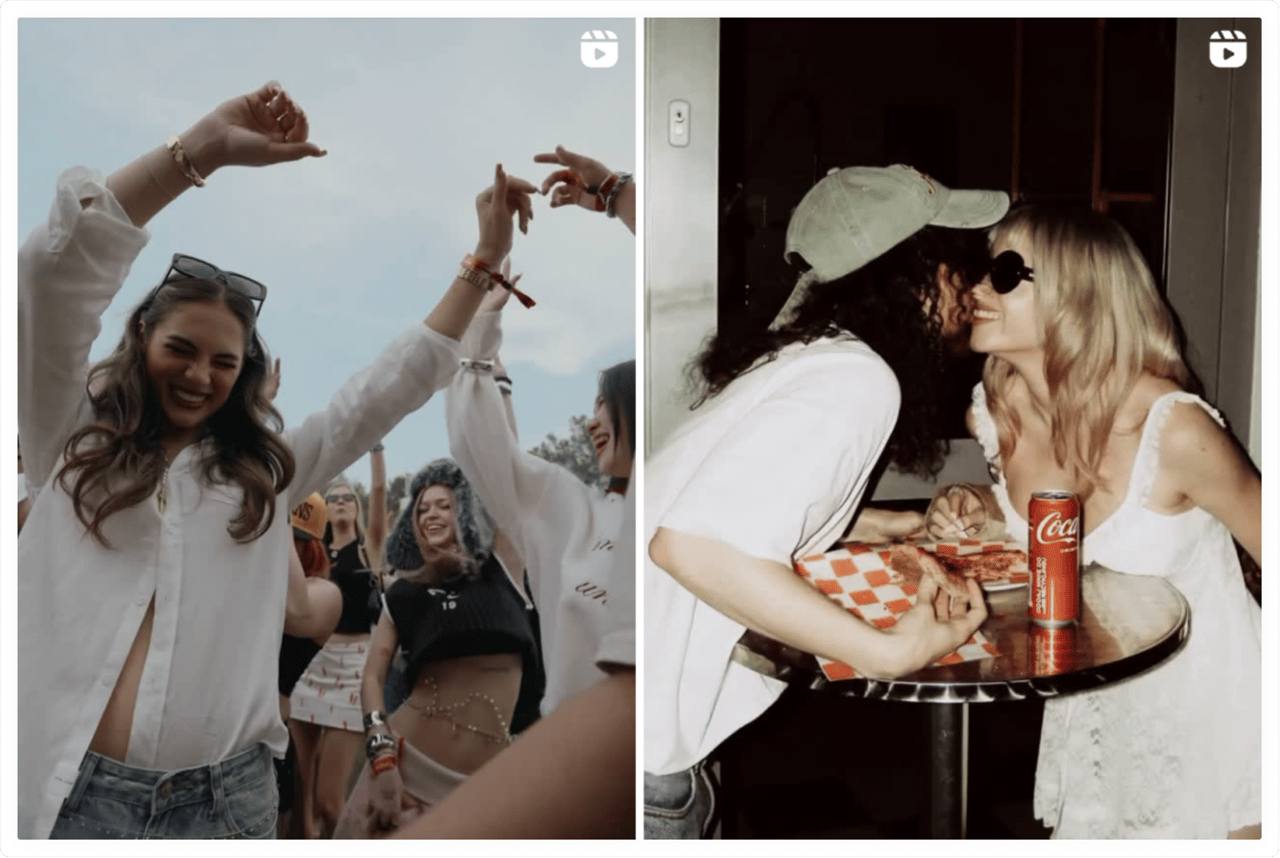

Emotional resonance or humor
People don’t remember perfectly optimized campaigns. They remember how something made them feel. Whether it’s a burst of laughter, a shared frustration, or a hit of nostalgia, emotional connection is what turns impressions into memories. Humor, in particular, is having a strong comeback in brand awareness-driven content.
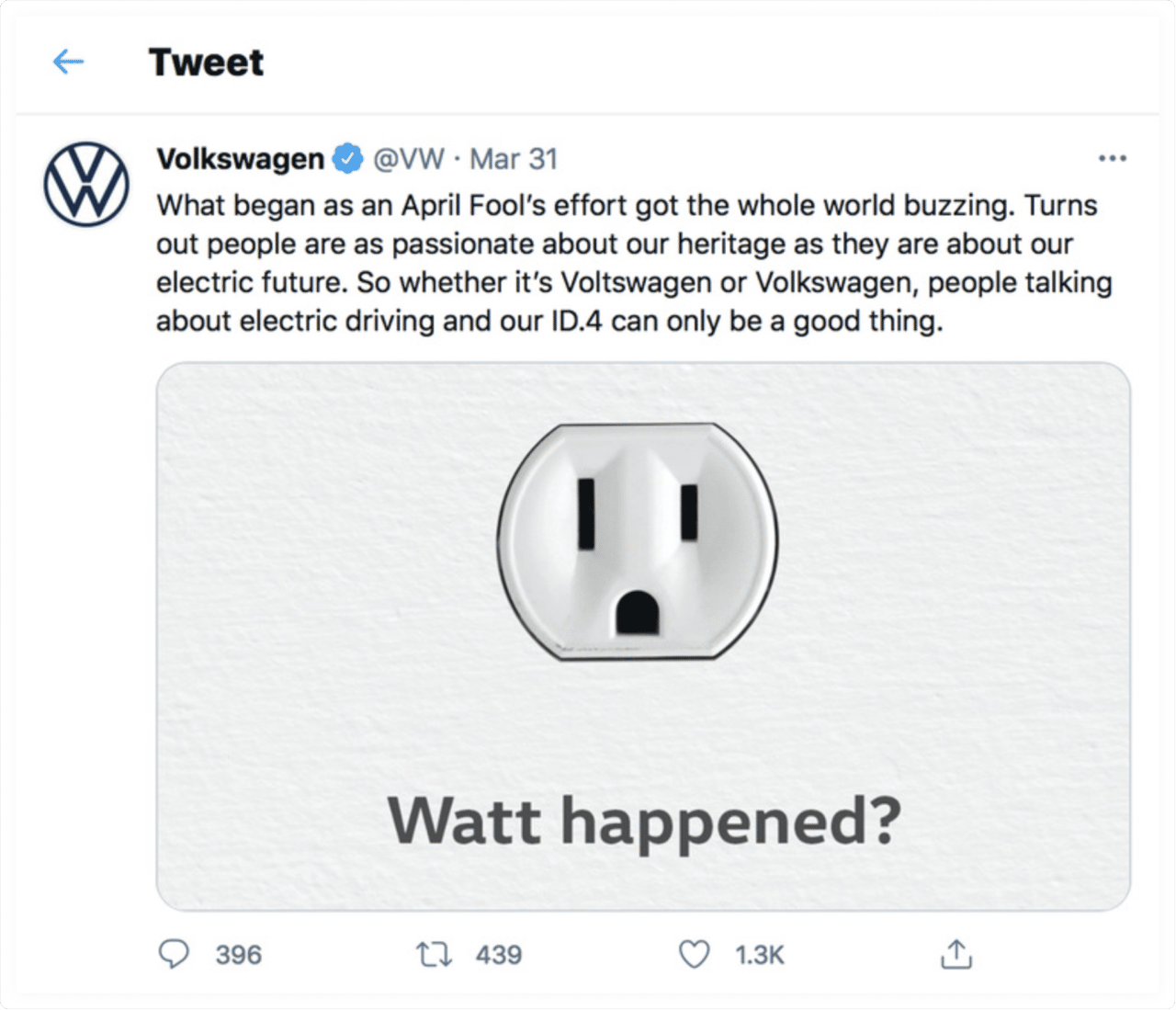

Source: X
Volkswagen's April Fool's joke on Twitter hit the cultural reference jackpot among familiarity consumers.
Visual consistency
Most brands understand the importance of consistency. Campaigns that use color, shape, and texture consistently across billboards, thumbnails, UGC, and influencer content build faster brand awareness and recall. Even when the logo is missing, the look should still say, “That’s us.”
Strategic timing
Launching when your audience isn’t paying attention is a missed opportunity. The best brand awareness campaigns align with culture—awards season, back-to-school, or EV buzz around new tax credits. Great timing comes down to planning paired with careful social listening.
Real-time monitoring and optimization
Brand awareness is a game that requires constant effort. The most effective campaigns are monitored and adjusted in real time. With tools like YouScan, you can spot which brand's product visuals perform best on social media, where conversation is picking up, or when sentiment shifts—and adapt mid-campaign to stay relevant.


Final thoughts: In a Zero-Click world, your brand is your best SEO
You can’t control where the clicks go, but you can control what they remember.
As AI-generated answers become the norm, your brand might not get the visit, the view, or the conversion. But it can still show up—in the summary, in the conversation, in the minds of your target audience when it counts.
That’s why brand awareness is no longer a nice-to-have. It’s protection. It’s presence. It's the core of your brand reputation and the key to brand equity. It’s the only way to stay relevant in everyday life where links are skipped, headlines are paraphrased, and visibility happens without attribution.
Social listening is how you know what’s working. Brand activations, awareness campaigns, and viral moments are how you earn your spot in the data that fuels AI. Because at the end of the day, your most powerful ranking factor isn’t a keyword—it’s your name.
Want to see how your brand shows up when no one clicks? Get a YouScan demo and start tracking your real visibility.
FAQs
What is an example of a brand awareness campaign?
Ford’s #FordMaverick AR challenge on TikTok is a great example—it reached over 10 billion views, making the Maverick recognizable through playful interaction alone.
What are the 4 stages of brand awareness?
The four stages of brand awareness begin with unawareness, where the potential audience has no knowledge of your brand. Next comes recognition, they’ve seen your name or logo before, but don’t have a clear sense of what you offer. Then there’s brand recall when they can remember your brand on their own, without prompting. The final stage is top-of-mind, where your brand is the first one that comes to mind within your category, the one they associate most strongly with the product or service you offer.
How do you create an awareness campaign?
Start by understanding your audience deeply. Then choose the right platforms and formats to meet them where they are. Build a message that resonates emotionally, stays visually consistent, and is easy to share. Finally, monitor reactions in real time and adapt based on what’s working.
How to create brand awareness?
Brand awareness comes from repeated, meaningful exposure. Use storytelling, social content, influencer partnerships, and native ads to get your name out there—and rely on tools like YouScan to measure your true visibility across platforms, both in text and visual content.

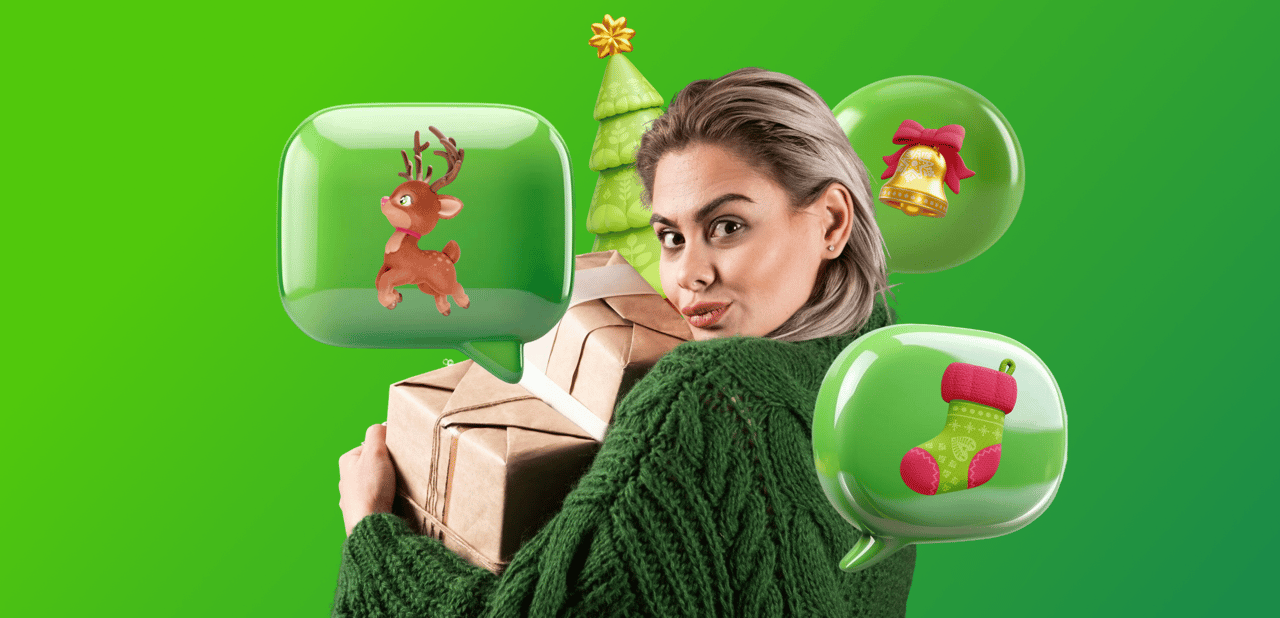
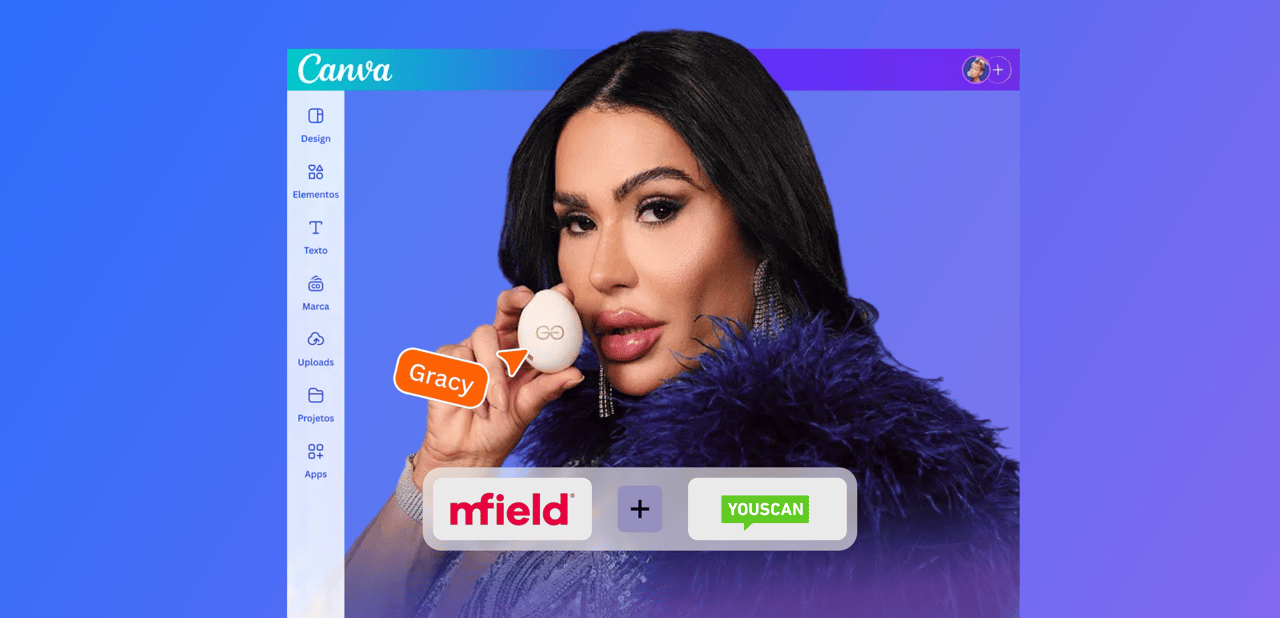
.png)